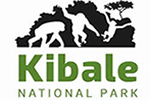Despite the fact that plenty of trekkers go through the year, generally in Uganda the best time to trek is dry season that is June, July, August and December, January and February. The time for chimpanzee tracking is either is morning and afternoon hours. It is advisable to trek in the morning during rainy season because the forest is slippery, watery and muddy during afternoon hours than morning hours. Worse again in rainy season, trekkers should know that there are low chances of seeing chimps on the ground as they tend to stay in trees. So the favorable season to trek chimps is dry season to have memorable tour experience in Kibale Forest National Park.
Summary
- The best time/months of the year to visit Kibale-June, July, August, September, December, January, February.
- Peak season/busiest months of the year- June, July, August, September.
- Low/off season- March, April, May, October, November.
- Best weather: June, July, December, January, February.
- The worst weather: April, May, October, November.
Kibale Forest, the primate capital of Africa can be visited all year round for primate safaris. The park is located in Eastern part of Africa and enjoys favorable climate that allows participating great outdoors all year round.
Therefore Kibale can be visited any time for primate watching though there is always the best time which is the dry season. In this article, we bring you a breakdown of Uganda’s weather conditions that is months for dry season and those of rainy season;
Dry season (Best Season)
June, July & August and December, January & February
The drier months from June to August and December to February are considered the best time for viewing wildlife in Uganda. During these months there’s little or no rainfall and in the south where the gorilla trekking activity takes place, trails are dry and not slippery thus making this the most preferred time for a gorilla trek or chimpanzee tracking experience. Wildlife is easier to spot as animals gather around water points and there is also little undergrowth for the animals to hide. You will also have enough time for bird-watching.
The Rainy Season
March, April & May and September, October & November
In Uganda, there are two rainy seasons that is long season in March through May and then short rains in the months of September, October and November. The long rains are known for their heavy downpours that are not suitable for a primate safari in Uganda since they make the terrains slippery and vegetation to grow longer.
The long rainy season does not mean that it rains throughout the day hindering human activity. But, a heavy thunderstorm may last for an average of 3 hours and the rest of the day remain winter-like but during the short rains the sun may show up and heat up the moment in just a few minutes changing every living thing’s mood.
What to Consider While going for a Primate Safari in Uganda
Tracking permits
For one to go on a primate safari, he or she must possess a tracking permit from Uganda Wildlife Authority or through a reputable tour operator. These permits are limited and should be booked several months in advance, especially for the dry seasons.
The cost for a chimpanzee permit is US$250 per person.
Suitable Packing List for the Trip
Regardless of the season, Uganda’s tropical climate means weather can be unpredictable. Always pack sturdy hiking boots, rain gear, and layered clothing for the primate safari.
Best time to go for a primate Safari in Uganda
Uganda can be visited any time throughout the year but the best time is during the dry season in the months of June to September and December to February.
